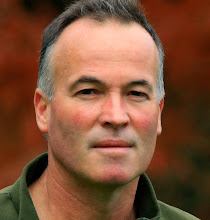"Kiwis Against Possums: A Critical Analysis of Anti-Possum Rhetoric in Aotearoa New Zealand"
It's a pleasant change to see there are still researchers out there that are prepared to present a research paper, beyond financial influence, and popular inDoCtrination.
Please click this link Kiwis Against Possums to view the paper.
Annie Potts is Co-director, New Zealand Centre for Human-Animal Studies, University of Canterbury
Subscribe to:
Post Comments (Atom)







Hi Clyde - can you please identify the location of the pool where you took the video of the freshwater crayfish. Date too please. Many thanks.
ReplyDeleteHi Ian, it was in the Whanganui National Park area. Not sure of date, but on one of the drops that have taken place in the last 18 months or so. There's been a couple. Unfortunately, where-ever crayfish are present, and poisonous food is dropped from helicopters, you will see the crayfish eating bait. It happens on every drop that the crayfish are present.
ReplyDeleteWhich creek?
ReplyDeleteWouldn't have a clue, Ian.
ReplyDeleteThere are 100's of small creeks in the area. Over every ridge, in fact. They're not named. A bit like the 50,000 multi cellullar organisms that are not yet formally described, but exist in the New Zealand wilderness - but yet, the poisoning operations continue! I can say that the creek, where-ever it was, is only one in the 1000's of small creeks and streams that are poisoned, every year, in aerial 1080 poison operations in New Zealand.
You must surely have some idea of where you were.
ReplyDeletehere's a neat quote from
ReplyDeleteWeinstein LH, Davison AW (2004) Natural organofluorine compounds. Chapter 8 in “Fluorides in the environment, effects on plants and animals”. CABI Publishing, USA
on page 216 it says.... “Monofluoroacetic acid probably occurs in nature as sodium or potassium monofluoroacetate. In the literature it is mostly referred to as fluoroacetate, so we use that term or MFA for convenience”
Hi Clyde
ReplyDeletehere's some other good researchers
Vartiainen & Kauranen 1984. The determination of traces of fluoroacetic acid by extraction alkylation, pentafluorobenzylation, and capillary gas chromatography-mass spectrometry. Analytica Chimica Acta 157: 91-97.
They reported finding fluoroacetate in tea. and they're from Finland.
reckon you'd have to dig out a really big shiny tinfoil hat to concoct a conspiracy theory that put them in the pay of DOC.
would you still advise people there's no fluoroacetate in the tea on their supermarket shelves?
Firstly, "probably" is a common word used to imply proof, in DoC research! Secondly, if there is indeed mono fluoroacetate in tea, I suggest you direct your lesson to the consumer. However, once diluted in water, I'm sure it's safe...going by DoC's medical expertise, anyway.
ReplyDelete